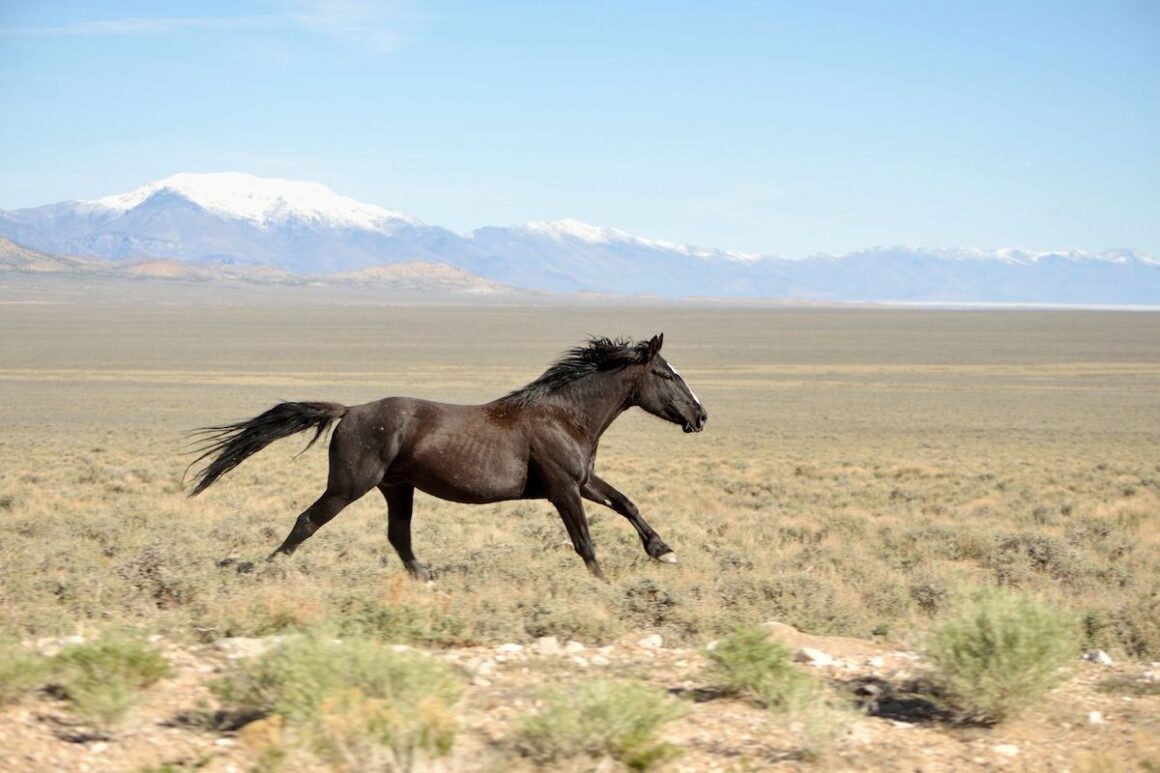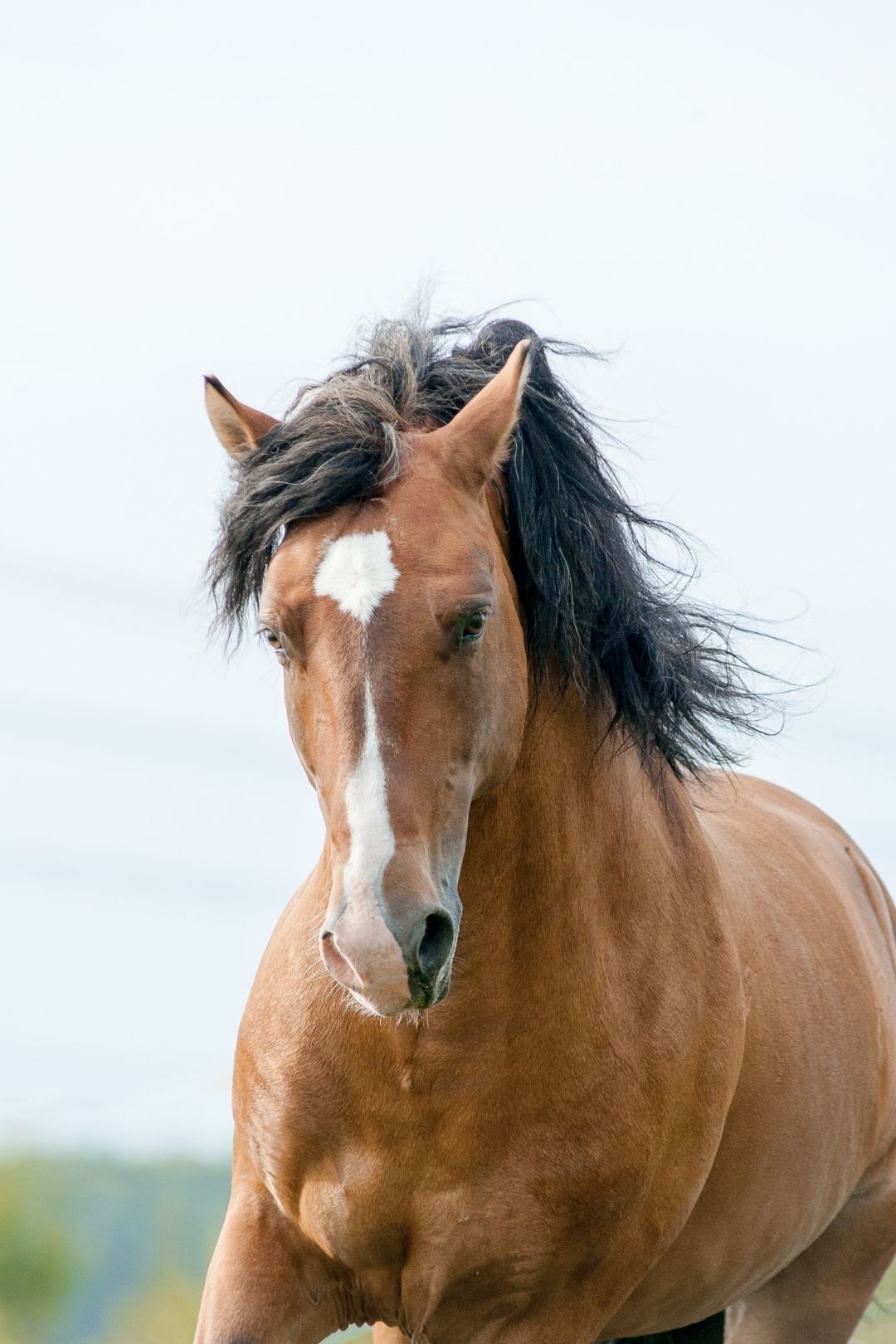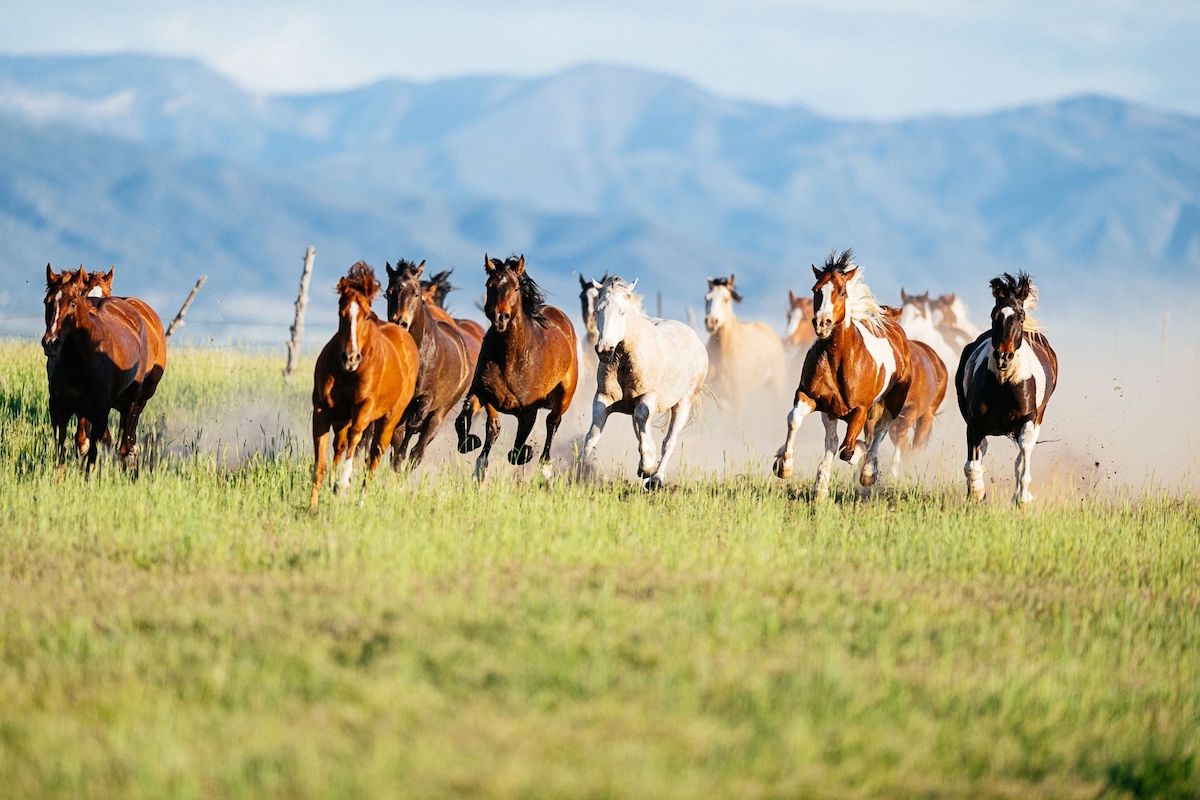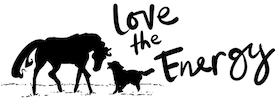The American Mustang is part of our heritage. They create an iconic image as they roam the rugged landscape of the western United States. Mustangs are also amazing partners for equestrians seeking a strong bond and a sure-footed horse.

The Mustang horse is an American symbol of freedom and the rugged west. In fact, they have weaved their way into the folklore of the founding of our country and exploration of the western United States. The breed is now nationally recognized, protected, and remains a symbol of our history.
Mustang horses have a romanticized and threatened existence. People enjoy seeing them roam the land and they represent what we want to be. But they have also faced challenges because of overpopulation, competing with other land uses, and harsh herding practices.
History of the Mustang Horse

Mesteño means wild or stray in Spanish, and the name Mustang derives from this word. Mustangs are considered feral and not wild horses because they descend from domesticated horses. This is a technicality and most people refer to the Mustang as a wild horse.
European explorers brought horses to North America with them from the 1500s through 1880. Some of these horses escaped and developed the Mustang breed as we know it today. Of course, these horses started in the eastern part of the country. Population increases and urbanization forced the horses west.
Mustangs changed the lives of the Native Americans on the Great Plains, and so began their great horse culture. Now, their people could travel further distances and hunt larger animals. The breed continued to evolve and expand its numbers, reaching the peak population of two million horses around 1900.
Breed Characteristics
Mustangs are warmblood types and a mixture of many breeds. The original Spanish horses mixed with other breeds that also escaped. Draft horses, the East Friesian from Germany that was used by the military, and others influenced the breed. Some isolated bands of horses still have phenotypes that tie closely back to the Spanish horses.
The diversity of breeds and bloodlines means that the Mustang also has a range of breed characteristics. Height varies from pony size of around 13 hands to 15 hands. They have muscular, and strong bodies, especially the hind end. One trait that every Mustang owner I know attests to is that they have large, strong feet. These developed as a necessity and are an asset to the horses, helping them stay sound and active. Mustangs can be any coat color because of their varied bloodlines.
Genetics and survival of the fittest have made the Mustang breed smart, independent, and strong-willed. They had to be to survive! Trainers and owners all agree that it’s important to create a strong bond with a Mustang and build trust before you begin working with them. Once you have their trust, they will do anything for you.
A Threatened Existence
The history and present situation of Mustang horses is not without its challenges. As the population of the western United States has expanded, so have the threats to the breed. The population was two million horses in the early 1900s. Several practices cut that number in half. Mustanging was popular and detrimental to horse numbers. The horses were hunted and harvested for dog food. They stopped this practice after World War II. Ranchers regularly shot Mustangs because they competed with cattle for limited grazing. The Wild Free-Roaming Horse and Burro Act of 1971 provided protection and led to a population explosion.
This overpopulation on Bureau of Land Management (BLM) land has resulted in countless challenges. Moreover, the rangeland available cannot support all the Mustang horses. Roundups gather surplus horses and place them in holding facilities. Multiple herds are mixed in single pens at holding facilities, and this can lead to injuries. Adoption is a solution for the lucky horses. Others may spend the rest of their life in a long-term holding facility. This meager existence certainly doesn’t represent freedom and the iconic lifestyle of the west but is necessary to control populations and protect the limited resources available.

The Mustang Horse Today
There are approximately 67,000 Mustangs and burros roaming on the 26.9 million acres managed by the BLM in 10 states. Another 46,000 Mustangs and burros are at short and long-term holding facilities. The Adopt-A-Horse program is a population control method that rounds up horses and pairs them with suitable homes where they become riding horses. Horses in all 10 states are part of the program. It started with horses from the Pryor Mountains of Montana in 1973.
Mustangs have many uses and are popular trail riding and endurance horses because their natural selection over many generations has made them very hardy and sound horses. From dressage to ranch riding, they are versatile and enjoyable horses. Further, any discipline is a possibility with a Mustang.
The Mustang Horse has endured through all the trials and tribulations the breed has faced. Adopted horses excel in their new homes and find lasting success and careers. Mustangs that remain on the BLM land serve as a constant reminder of our past, independence, and tenacious spirit.
Sources: Mustang Heritage Foundation, Bureau of Land Management, and Oklahoma State University.
